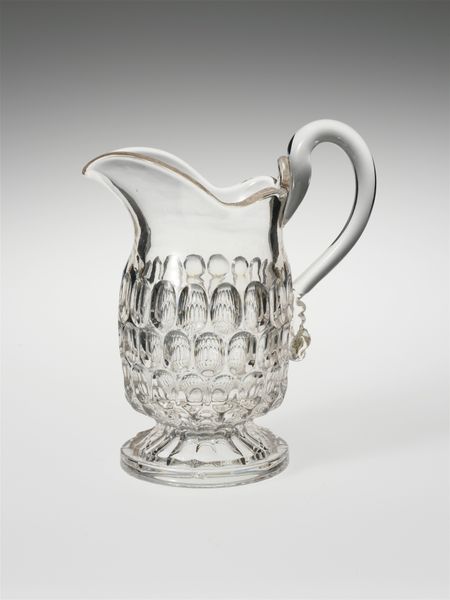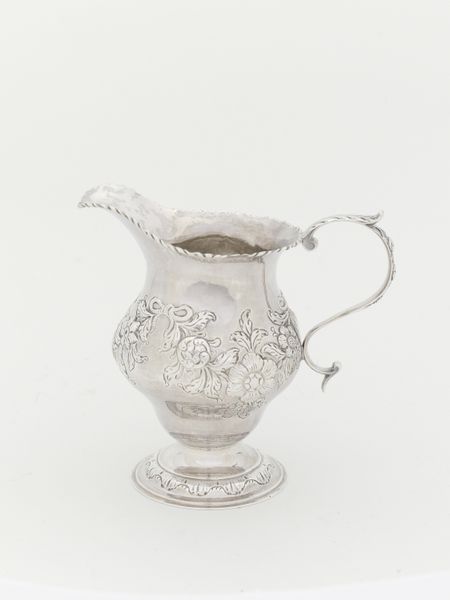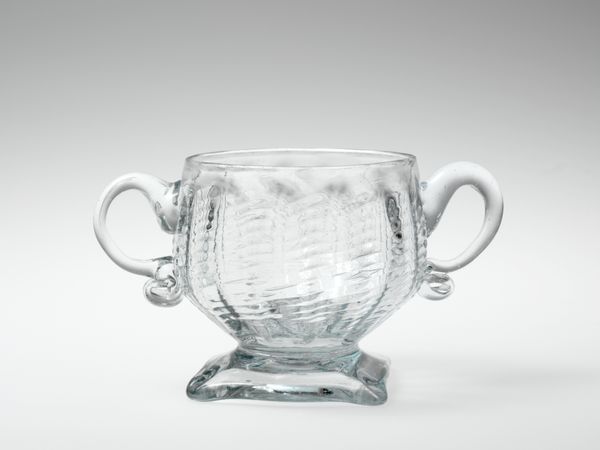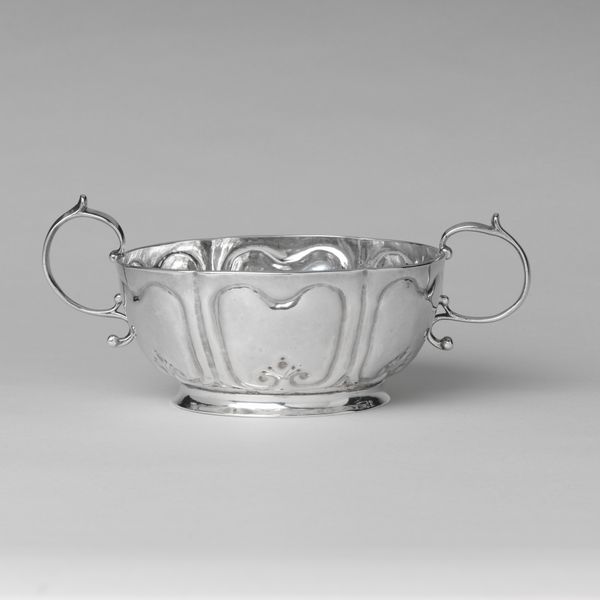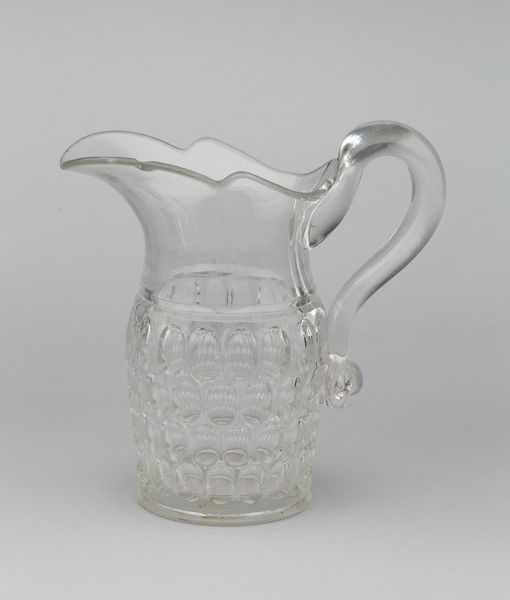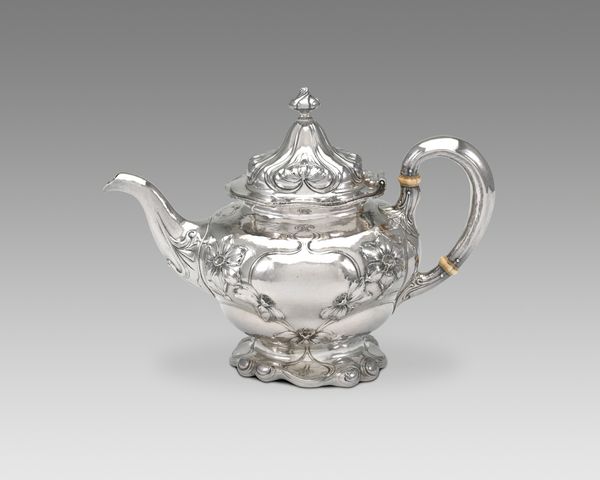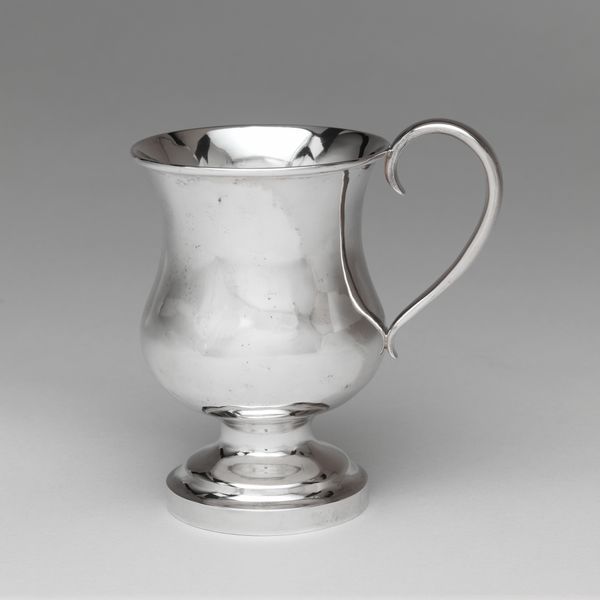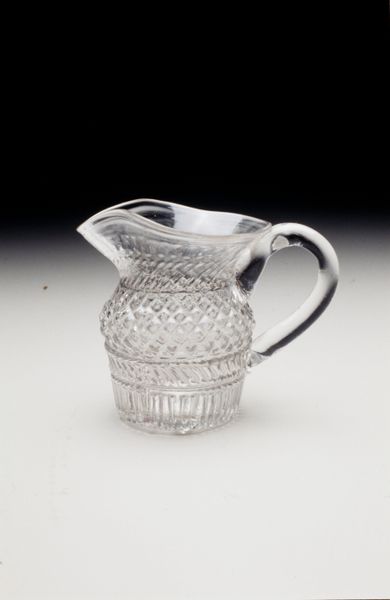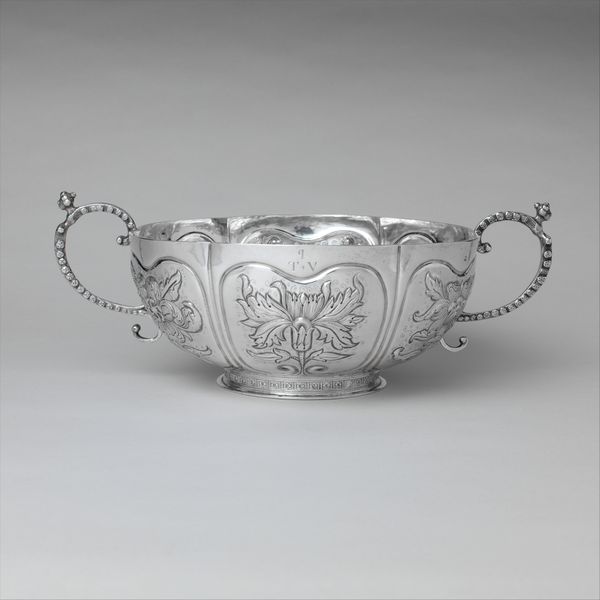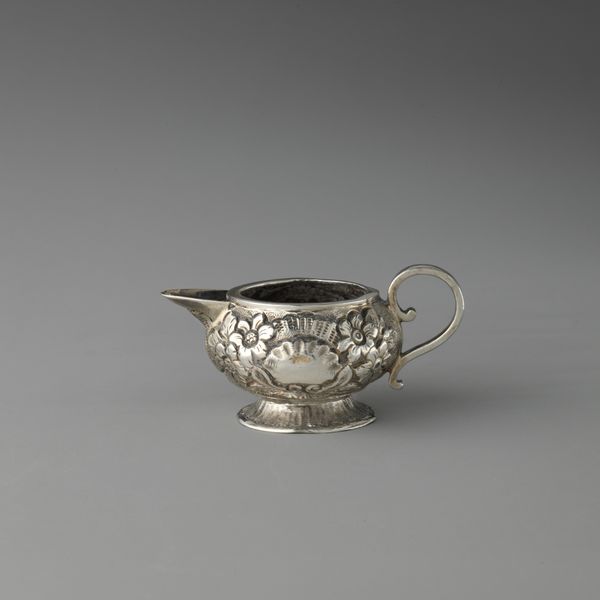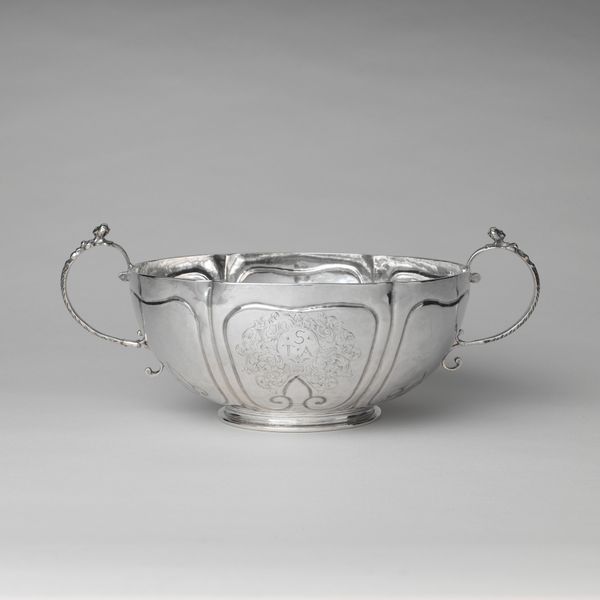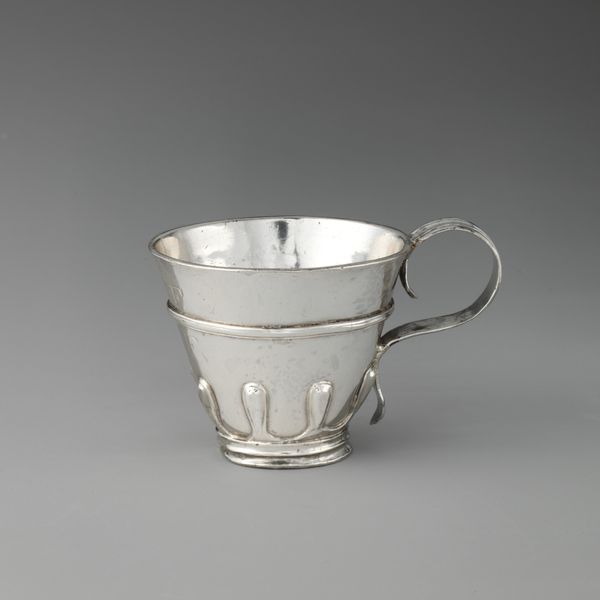
ceramic, glass, sculpture
#
ceramic
#
glass
#
geometric
#
sculpture
#
romanticism
#
decorative-art
Dimensions: H. 3 5/8 in. (9.2 cm)
Copyright: Public Domain
Curator: Before us, we have a cream pitcher crafted by the New England Glass Company, likely sometime between 1827 and 1835. The piece is held in the collection of the Metropolitan Museum of Art. Editor: It’s ethereal. The light plays tricks on the eye; all that intricate cutting makes it almost disappear against the background. The handle, particularly, looks like a captured raindrop. Curator: Indeed. The elaborate geometric cuts and the very clear glass speak volumes. Notice the carefully placed motifs: The curves softening the angles, topped off with what appears to be a meticulously etched heart shape at the apex. It reflects the romantic style gaining traction at that time. Editor: It does suggest a kind of optimistic prosperity, doesn't it? Glassware like this would have signified not just wealth but taste, reflecting the aspirations of the burgeoning middle class in America. I wonder about the table settings it would have graced, the conversations overheard… Curator: Precisely! Its social utility aside, look at how light animates the material! The geometric patterning refracts light creating a myriad of effects. Consider the tension between the vessel’s inherent practicality and the visual splendor of its embellishments. Editor: It's fascinating how the relatively new availability of this kind of decorative glass allowed people to participate in the visual language of wealth, even on a modest scale. Imagine the impact a piece like this would have in a more modest household! Curator: Certainly. The design allows form and function to become a compelling signifier. And I would wager this cream pitcher stood as a gleaming icon of attainable refinement during the antebellum period. Editor: Absolutely. It's a testament to how even the most utilitarian objects can be imbued with meaning. The subtle ways objects like these are made accessible allow us to read into not just a family’s prosperity, but how that was made so readily available. Curator: Indeed, a beautiful marriage of material and the aspirations of the day. It stands today as an enduring emblem of both artistry and social history. Editor: It’s remarkable to think that such a fragile object speaks so clearly across the ages.
Comments
No comments
Be the first to comment and join the conversation on the ultimate creative platform.
